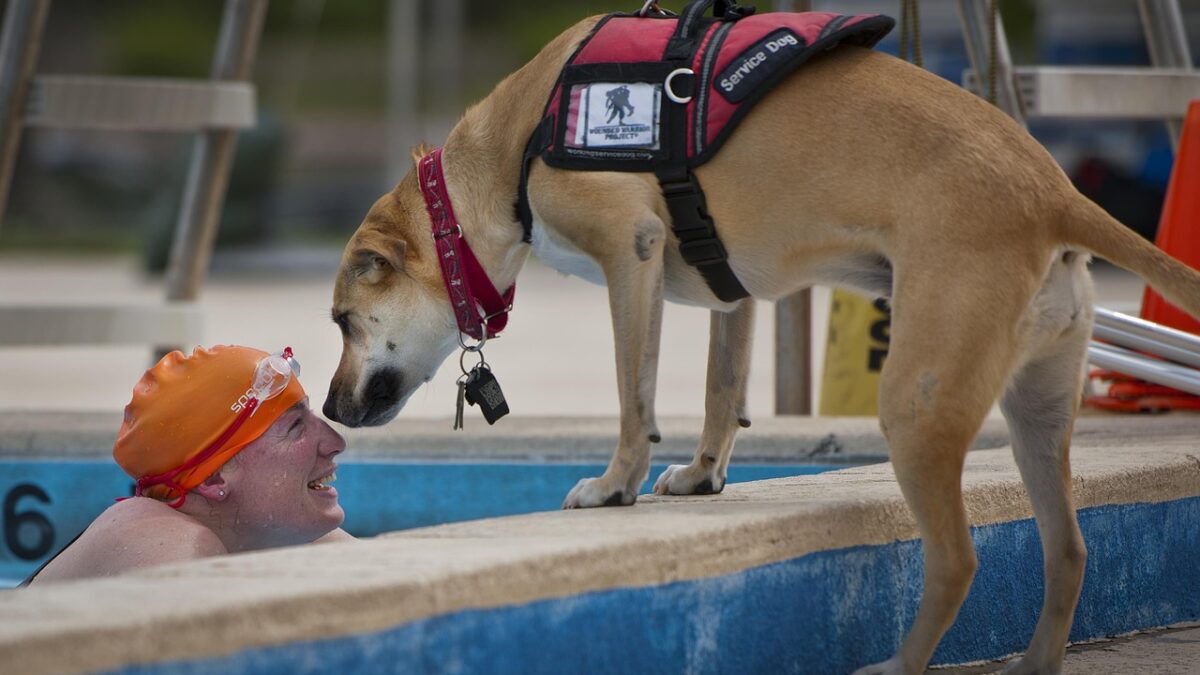LCTA’s Service Dog Program-Where to Start
We frequently have clients come to us in need of a Service Dog, but they have no idea where to start! After helping multiple clients navigate their way through the maze of complexities involved with obtaining a Service Dog, I decided to write a blog post to make it easier for others to start the process of obtaining a life changing animal partner.
Figuring Out Cost
The first, and most important, step in adding a service dog to your life is to take a realistic look at the cost involved.
The typical cost of a trained and certified Service Dog is $18,000-$30,000. Usually this covers the cost of the dog plus care and training for 13 months-2 years along with certification, depending on the program.
I strongly recommend having the entire amount needed before you actually commit to a training program. This will save you a lot of stress in the long run.
You will also have to account for spay/neuter of your animal, as this is not typically covered by the training facility. Other expenses to anticipate are vaccinations, vet bills, and food for your dog for their entire life.
All in all, you need to plan on being financially responsible for your animal for the next 10-15 years depending on the breed’s lifespan.
Budgeting and Fundraising
Once you have figured the cost for your service dog, the next step is budgeting and fundraising. Find out if the training facility you are planning on working with requires a lump sum up front, half up front, or if they allow monthly payments.
There are many organizations out there that will donate either money or time to help you. We cover fundraising ideas in another post titled LCTA’s Service Dog Program-Fundraising Ideas.
You should also check into a loan. There are several loan providers out there who specifically lend for pet related purposes, from the initial cost of the service dog to routine costs incurred throughout the life of your animal.
What Breeds to Look For
When selecting a breed of dog for your service dog, you need to account for several things. The first is breed temperament. If the breed is typically high strung and independent, such as Huskies, they will be harder to train. Some trainers will not work with hard to train breeds because the results are too hard to predict.
The next thing you should consider is typical breed size. If you need your dog for physical support or counterbalancing, you need a bigger dog that is capable of handling your weight.
Another factor in choosing the breed you want is life span. The larger breeds typically do not live as long.
The most frequently used breeds for service dogs are Golden Retrievers, Labrador Retrievers, German Shepherds, and many types of “Doodles” (a cross between a poodle and some other similarly sized breed).
If allergies are a factor, Doodles are a good choice. They tend to shed less. It is of note that no matter how many generations into the Doodle line you are, no dog is completely “Hypoallergenic”. They may be low to minimal shedding, but fur is not the only allergen associated with dogs. People can be allergic to their skin cells and saliva as well.
Some training facilities will only allow you to use a dog of their choosing which may limit your ability to choose the breed. Most facilities will not work with un-verified dogs. If they do, they will likely charge a fee to train them.
If you are able to choose, have the trainers assist you in locating a reputable breeder and a specific dog from a litter. Trainers know what they are looking for in temperament and intelligence in the dogs to make the best service animal. There are a lot of dishonest and immoral breeders of every type of breed out there, so working with breeders known to the trainers will help eliminate the chance of getting a “flawed” dog as well as not supporting an unethical breeder.
After You Have Picked Out Your Dog
After you have purchased your dog, expect to work closely with the training facility. You need to plan to visit your dog every few months so that the trainers can tailor the training to whomever needs the service dog. This will include interacting with the dog in a controlled environment. You need to act a certain way around the dog so as not to undue training.
They may also ask you to send samples of your saliva to the facility if the dog is a diabetic alert animal. They will also need to know any chemicals that are present when symptoms in the handler’s condition are present, such as low cortisol levels in someone with Addison’s Disease.
The trainers will also need you to grant them access to medical records of the handler and give them any contact information you have for doctors, specialists, etc.

Thank you for taking the time to read my blog!
Tiffany Buerer has almost half a decade of training experience with Lost Creek. She is an expert in obedience training, and she has helped rehabilitate hundreds of aggressive dogs. She has also assisted with the training and certification of multiple service dogs through Lost Creek’s Service Dog Training & Certification Program.
Related Posts
Leave a Reply Cancel reply
You must be logged in to post a comment.
Search our site
Categories
- Confessions of a Bad Dog Owner Column (1)
- Inspiration (1)
- Medical (3)
- Products We've Reviewed (1)
- Tips & tricks (8)
- Uncategorized (3)




